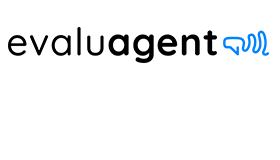Jodie Rhodes at EvaluAgent outlines five key components of a successful call centre
Call centres are important in today’s fast-paced corporate world, acting as the front lines of client interactions and moulding the overall customer experience. To thrive in this extremely competitive sector, you must understand and implement the essential factors driving call centre success.
EvaluAgent is a well-known provider of contact centre quality assurance solutions. They have identified five components that form the core of a thriving call centre based on their analytical results that will help other call centre leaders and professionals elevate their operations.
Engaged Agents: Cultivating Growth and Recognition in Call Centres
Call centres can use specialised strategies to develop a culture that fosters development and appreciation among their agents, improving both their performance and general client happiness.
Regular Performance Review:
Call centre managers can offer helpful criticism, point out areas for development, and acknowledge agents’ abilities by implementing regular performance reviews and feedback sessions. This continuing conversation pushes agents to improve their skills and fosters growth continuously.
Specific Training and Upskilling:
Providing agents with opportunities to improve their skill sets and focused training programmes boosts their competence and confidence and allows them to manage various customer circumstances successfully.
More delighted customers and greater call centre performance result from this investment in agent development.
Programmes Providing Incentives and Recognition:
Creating rewards and recognition systems that honour exceptional agent performance fosters a supportive and energising workplace.
Call centres can adopt programmes like monthly performance awards, agent spotlights, and gamification aspects to recognise agents’ accomplishments and foster camaraderie and healthy rivalry.
Technology: Increasing Effectiveness and Customisation
For call centres to provide great service, utilising cutting-edge technology is also vital. Agents are given the resources to respond to consumer inquiries quickly and effectively. Here are some examples of essential tools that assist with contact centres succeeding:
Automated Call Distribution:
This technology sends incoming calls to the right agent, reducing wait times and increasing customer satisfaction.
Interactive Voice Response:
They can use their voice to select alternatives from a menu using the interactive voice response (IVR) tool, making it easier to quickly find the appropriate department or agent.
Software for managing client relationships enables agents to record customer conversations, personalise assistance, and regulate customer interactions.
Intelligent Routing Systems:
Reduces wait times and boosts first-call resolution rates by automatically routing calls to the most qualified agent based on that agent’s expertise.
Chatbots Powered by AI:
This technology can handle common questions and give prompt answers, enabling all human agents to deal with more complicated client issues.
Omni-Channel Incorporation:
Customer reassurance is increased by using omnichannel integration, as it allows customers to contact businesses using their favourite means of communication, whether that is via phone, chat, email or social media.
Quality Assurance: Guaranteeing Consistent Excellence
A successful call centre quality assurance software has to have these elements that will point out areas for development and offer continual training opportunities. Some of the key areas that create a strong quality assurance system are:
Call Monitoring and Evaluation:
Analysing client calls to evaluate agent performance, pinpoint areas for development, and deliver specialised coaching and training.
Quality Scorecards:
This will measure an agent’s performance and give useful feedback that can help to ensure consistent and excellent client encounters.
Calibration Sessions:
Regular calibration meetings among evaluators are held to guarantee objective performance evaluations and reliable, impartial scoring.
A Customer-Focused Approach: Forging Long-Lasting Connections
Every successful call centre is built on the fundamental principle of having a customer-focused mentality. Call centre representatives may create individualised experiences. Important strategies for implementing a client-centred strategy include:
Empathy and Understanding:
Educating staff on how to relate to clients’ worries and show sincere interest and compassion.
Active Listening:
Encourage agents to listen actively, pose pertinent questions, and offer personalised solutions as a sign of their dedication to satisfying customers’ needs.
Effective Issue Resolution:
Involves giving agents the power and resources they need to deal with customer issues quickly, prevent needless escalations, and provide effective solutions.
Ongoing Development: Adapting for Long-Term Success
Establishing a continually improving environment that you want to succeed over time. Setting up continual development requires, among other requirements, these particular elements:
Feedback Systems:
Incorporating surveys, post-call feedback, and client fulfilment measurements are examples of customer feedback systems used to collect information and pinpoint areas that may be improved.
Root Cause Analysis:
Implementing meticulous root cause analysis to obtain customer escalations or recurring issues may reveal underlying system, procedure, or agent training shortcomings. Call centres can reduce overall inefficiency and prevent future incidents by locating and treating these core causes.
A/B Testing:
Using A/B testing methodologies enables call centres to test out various strategies, including script modifications, call handling methods, or customer contact tactics. Call centres can determine the best practices and improve their operations by measuring and comparing the results.
This blog post has been re-published by kind permission of EvaluAgent – View the Original Article
For more information about EvaluAgent - visit the EvaluAgent Website
Call Centre Helper is not responsible for the content of these guest blog posts. The opinions expressed in this article are those of the author, and do not necessarily reflect those of Call Centre Helper.
Author: EvaluAgent
Published On: 29th Jun 2023
Read more about - Guest Blogs, EvaluAgent






 EvaluAgent provide software and services that help contact centres engage and motivate their staff to deliver great customer experiences.
EvaluAgent provide software and services that help contact centres engage and motivate their staff to deliver great customer experiences. 








